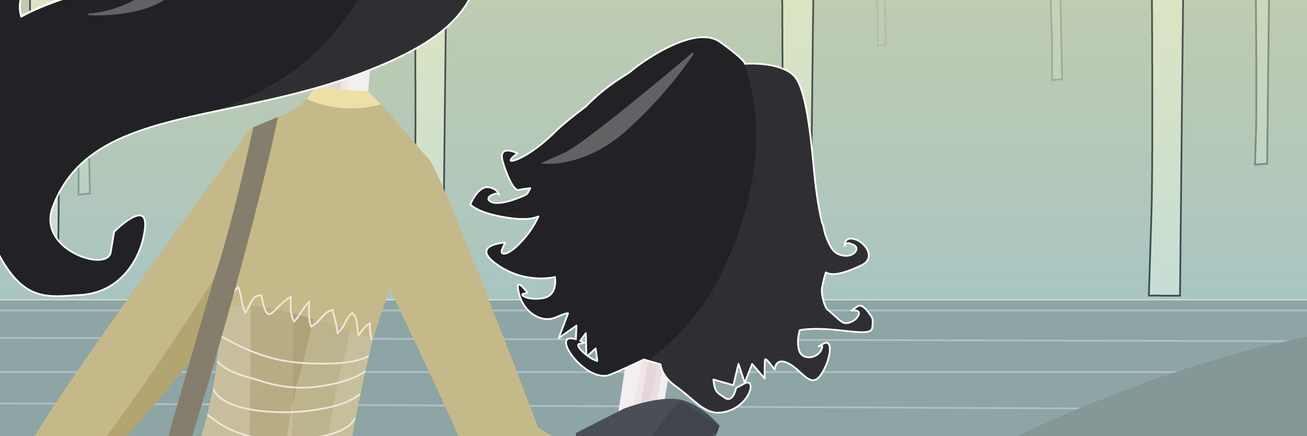Editor’s note: Daughter’s name has been changed to protect her privacy.
Laina was always on the move. In utero, she did non-stop backflips, karate kicks and interpretive dances. She started walking at 10 months old, and never looked back. I often joke that she never sat down, not even in the bathroom. And her personality matched! No child has ever been as witty, sharp, determined and curious as Laina. She did not march to the beat of her own drum — she composed her score and played it on instruments of her own invention.
Her full-force zest was the same with food. Toddler Laina ate everything placed near her, including what was on our plates. Only one food was banished from her menu: green beans. She ate spinach, avocados, swiss cheese and everything else under the sun, including a stew I made with tomatillo salsa. Her motto seemed to be the more flavor and variety, the better. Her eating was a parent’s dream.
When she decided milk was something she didn’t want at every meal, it made sense to me. She’s growing, moving and wants water to quench her thirst. For the next two years, she put a few other foods on that banished list, very slowly. I discussed her preferences with her pediatrician, who assured me toddlers and small children are very adept at modifying their diets intuitively, perhaps doubling up on protein one day, and compensating the next by doubling down on fruit.
It all sounded reasonable, but I had a nagging feeling. I was watching her peers grow taller while she wasn’t. When she stood next to her fellow kindergartners, she looked like a preschool fugitive, a full head and shoulders shorter than the other kids. At her age 5 wellness check, I asked the pediatrician if it was possible that she wasn’t absorbing some nutrient that would allow her to grow. I genuinely believed she’d take a vitamin and then zoom! She’d be the height of the kids in her class. The pediatrician humored me by testing her blood, but she said, “Look, you are short. Your husband is short. I’m sorry to say she’s not going to be a basketball player.” At her wellness check at age 6, I asked again why she had put on such little weight from age 4 to age 6. The pediatrician ordered a bone density scan, with completely normal results. “She’s just petite,” the pediatrician said. Again, my worries about her lack of growth were shelved.
Three weeks after her seventh birthday, I received a call from her first grade teacher that started the engine on the pain train that is our current life. Laina was caught by a lunchroom aide throwing her entire lunch away. I listened to what the teacher said, and then questioned my daughter. She said she did this because she wanted to be healthy. I explained eating is healthy, and provides your body with the energy it needs to grow and play. At bedtime, I asked her about it again, hoping she would shed more light. She said it really wasn’t a big deal because she threw her lunch away many times, pretty much every day of first grade. I kissed her goodnight, and left the room.
So many thoughts were swirling in my head! Countless tiny facts were layering together and creating an arrow that was pointing to something truly terrifying. Her banished food list, two or more years in the making, now included: milk, cheese, peanut butter, cake, potato chips, French fries, donuts, all dairy, all snacks, all desserts. She was constantly asking if a particular food was healthy. She was reading labels and signs in stores and asking what gluten-free, low-fat and paleo meant. She was asking for increasingly smaller portions, and negotiating how much food was acceptable to leave on her plate. She was obsessed with cooking shows. All of these things, in the moments they were occurring, seemed so normal. So mundane. So meaningless. The slow crawl of her eating disorder into our life was invisible.
A dear friend recommended I call an eating disorder center and have her assessed. The ED center confirmed these behaviors were not red flags or things to be cautious about, but were in fact proof that Laina had an eating disorder. However, they declined to diagnose her, saying that at age 7, she was far too young for their program. We were told to come back in five or so years. If I knew what we were in for, I would have acted differently. But I was naïve to the eating disorder — this brute, this evil beast, this kidnapper who was committed to destroying my 7-year-old child and our lives. I took being rejected by the ED center as a positive sign that we could turn this around quickly on our own or with the help of our pediatrician. “Today me” would really like to slap the naïveté out of last year me’s head.
So that’s how I met our eating disorder. Yes, I say “our” because my daughter is not alone in any of this. My battle gear is on, and so long as I can breathe, she will have my help. I have been dedicated to getting my daughter back for more than a year. This is the most difficult experience of my life and wounds me daily, but I will keep fighting. The eating disorder will regret meeting me.
Follow this journey on Elementary EDucation.
If you or someone you know is struggling with an eating disorder, you can call the National Eating Disorders Association Helpline at 1-800-931-2237.
We want to hear your story. Become a Mighty contributor here.
Thinkstock photo via shironosov.

